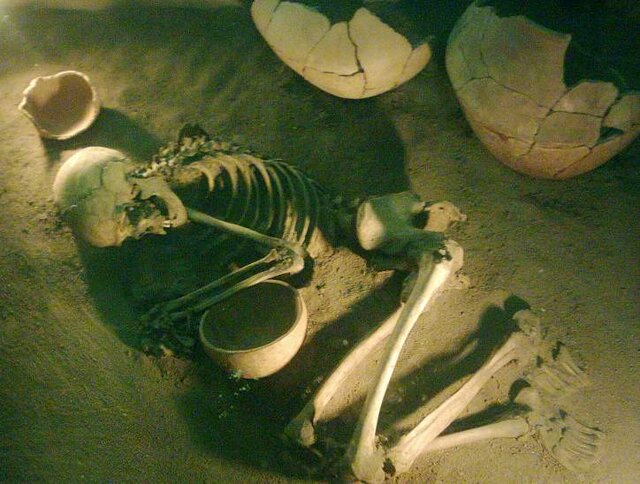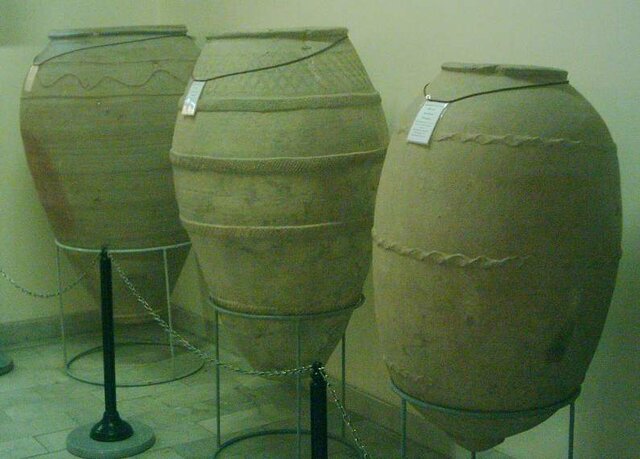
| ECBATANA
Ecbatana, Iran
Golden rhyton (drinking vessel) from Iran's Achaemenid period, excavated at Ecbatana. Kept at the National Museum of Iran Location
: Hamedan, Hamadan Province, Iran
Ecbatana (Old Persian: Hagmatana or Hanmatana, literally "the place of gathering", Elamite: Ag-ma-da-na Parthian: Ahmadan, Aramaic: Ahmeta, Ancient Greek: Ayßatava in Aeschylus and Herodotus, Akkadian: kura-gam-ta-nu in the Nabonidus Chronicle) was an ancient city in Media in western Iran. It is believed that Ecbatana is in Hagmatana Hill (Tappe-ye Hagmatana), an archaeological mound in Hamedan.
According to Herodotus, Ecbatana was chosen as the Medes' capital in the late 8th century BC by Deioces. Under the Achaemenid Persian kings, Ecbatana, situated at the foot of Mount Alvand, became a summer residence. Later, it became the capital of the Parthian kings, at which time it became their main mint, producing drachm, tetradrachm, and assorted bronze denominations. The wealth and importance of the city in the Persian empire is attributed to its location on a crucial crossroads that made it a staging post on the main East-West highway.
In 330 BC, Ecbatana was the site of the assassination of the Macedonian general Parmenion by order of Alexander the Great.
Archaeology :
Excavations in Ecbatana
The New Fire Temple of Shiyan Malayer is the only surviving relic of the Medes era in Hagmatana
Part of the Hagmatana underground city on the Hagmatana hill
The main explored in site of the Hagmatana Hills The Tell Hagmatana, also called Tepe Hegmataneh (thought to correspond to the ancient citadel of Ecbatana) has a circumference of 1.4 kilometres with an area of about 40 hectares, which corresponds to a report from Polybius, although the ancient Greek and Roman accounts likely exaggerate Ecbatana's wealth, splendor, and extravagance. Relatively few finds thus far can be firmly dated to the Median era. There is a "small, open-sided room with four corner columns supporting a domed ceiling," similar to a Median-era structure from Tepe Nush-i Jan, interpreted as a Zoroastrian fire temple. Excavations have revealed a massive defensive wall made of mud-bricks, and dated to the Median period based on a comparison to Tepe Nush-i Jan and Godin Tepe. There are also two column bases from the Achaemenid period, and some mud-brick structures thought to be from the Median or Achaemenid period. A badly-damaged stone lion sculpture is of disputed date: it may be Achaemenid or Parthian. Numerous Parthian-era constructions attest to Ecbatana's status as a summer capital for the Parthian rulers. In 2006, excavations in a limited area of Hagmatana hill failed to discover anything older than the Parthian period, but this does not rule out older archaeological layers existing elsewhere within the 35-hectare site.
Ecbatana was first excavated in 1913 by Charles Fossey. Excavations have been limited due to the modern town covering most of the ancient site. In 1969 the Ministry of Culture and Art began buying property on the tell in support of archaeology, though excavation did not begin until 1983. By 2007, 12 seasons of excavation had occurred. The work on the tell is ongoing.
Historical
descriptions :
"The Medes built the city now called Ecbatana, the walls of which are of great size and strength, rising in circles one within the other. The plan of the place is, that each of the walls should out-top the one beyond it by the battlements. The nature of the ground, which is a gentle hill, favors this arrangements in some degree but it is mainly effected by art. The number of the circles is seven, the royal palace and the treasuries standing within the last. The circuit of the outer wall is very nearly the same with that of Athens. On this wall the battlements are white, of the next black, of the third scarlet, of the fourth blue, the fifth orange; all these colors with paint. The last two have their battlements coated respectively with silver and gold. All these fortifications Deioces had caused to be raised for himself and his own palace."
Ekbatana (forse), phraakates e musa, dracma, 2 ac-4 dc ca Herodotus' description is corroborated in part by stone reliefs from the Neo-Assyrian Empire, depicting Median citadels ringed by concentric walls. Other sources attest to the historical importance of Ecbatana based on the terms used by ancient authors to describe it such as Caput Mediae (capital of Media), the Royal Seat, and great City. It is said that Alexander the Great deposited the treasures he took from Persepolis and Pasargadae and that one of the last acts of his life was to visit the city.
The citadel of Ecbatana is also mentioned in the Bible in Ezra 6:2, in the time of Darius I, as part of the national archives.
Ecbatana
= Hamadan & Site Controversies :
Assyrian sources never mention Hagmatana/Ecbatana. Some scholars believed the problem can be resolved by identifying the Ecbatana/Hagmatana mentioned in later Greek and Achaemenid sources with the city Sagbita/Sagbat frequently mentioned in Assyrian texts, since the Indo-Iranian sound /s/ became /h/ in many Iranian languages. The Sagbita mentioned by Assyrian sources was located in the proximity of the cities Kishesim (Kar-Nergal) and Harhar (Kar-Sharrukin).
It is now proposed that the absence of any mention of Ecbatana in Assyrian sources can be explained by the possibility that Assyria never became involved as far east as the Alvand mountains, but only in the western Zagros.
Sir Henry Rawlinson attempted to prove that there was a second and older Ecbatana in Media Atropatene on the site of the modern Takht-i-Suleiman. However, the cuneiform texts imply that there was only one city of the name, and that Takht-i Suleiman is the Gazaca of classical geography. There is also the claim that Ecbatana used to be the city of Tabriz, which is one of the historical capitals of Iran and the present capital of East Azerbaijan province. The city, which was previously called Tauris, was put forward by John-Thomas Minadoi, who cited that his identification of the city was based on data collected from modern and ancient geographers, recent travel accounts, and local informants. This theory was also promoted by other historians such as Sir William Jones and the chief French orientalists.
Ecbatana is the supposed capital of Astyages (Istuvegü), which was taken by the Persian emperor Cyrus the Great in the sixth year of Nabonidus (550/549 BC).
Gallery-Hagmatana Museum :
A human skeleton in Hagmatana Museum which is kept as it was found
Food and water jars kept in Hagmatana Museum
Source :
https://en.wikipedia.org/ |
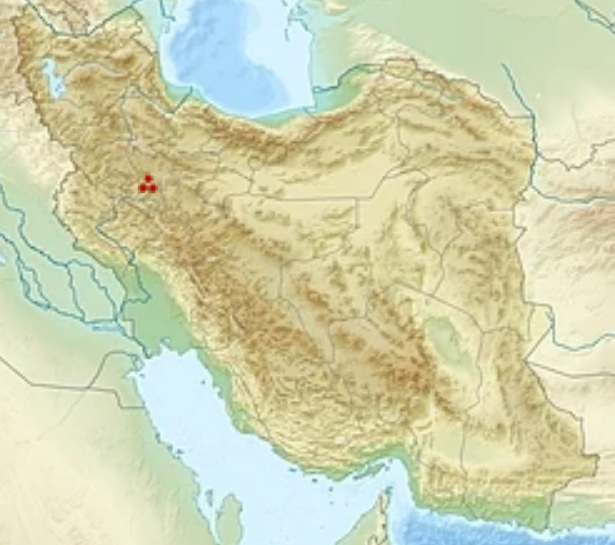
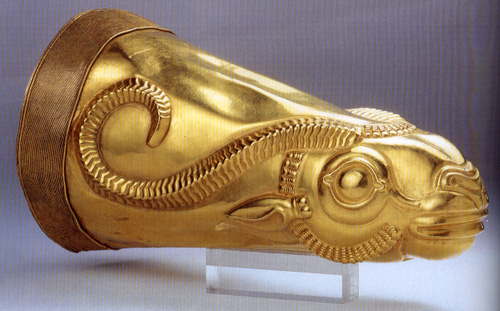
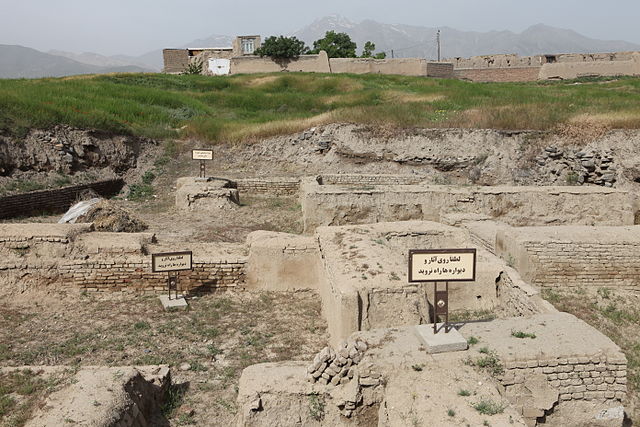
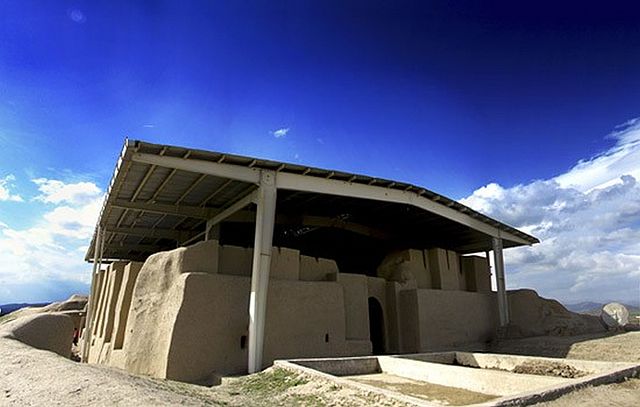
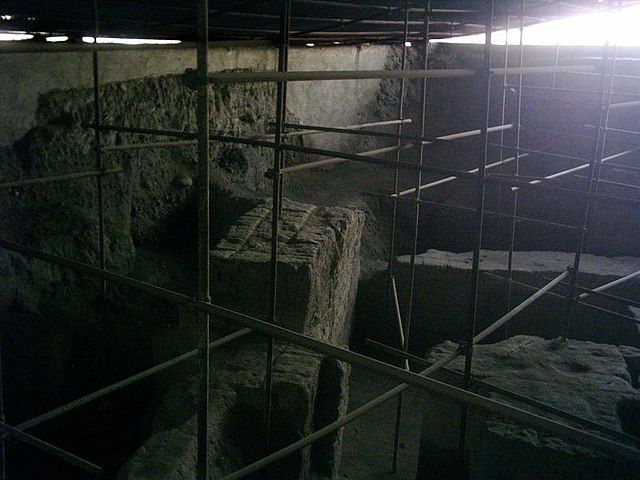
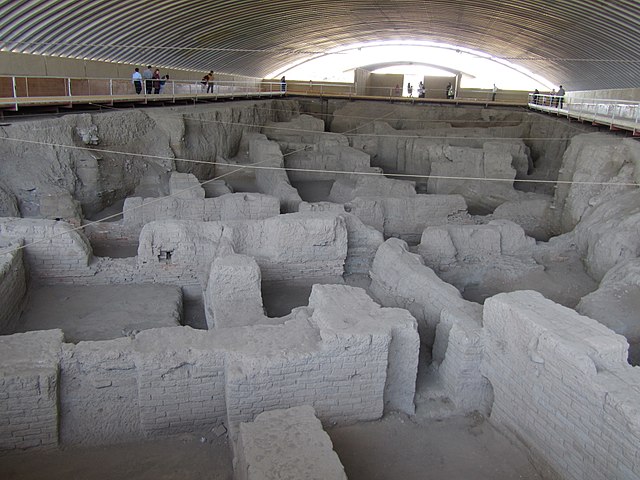
,_phraakates_e_musa,_dracma,_2_ac-4_dc_ca.jpg)
